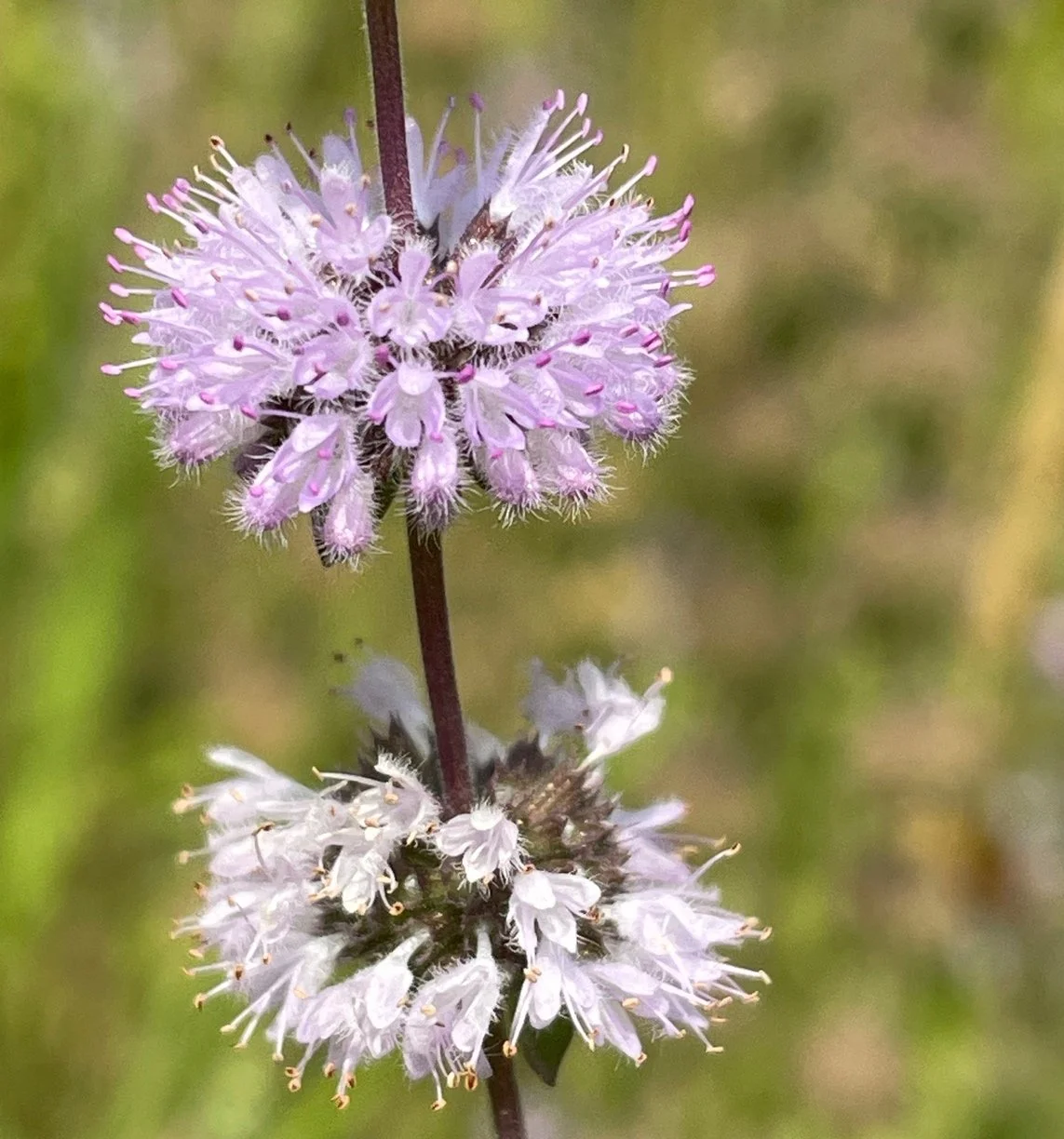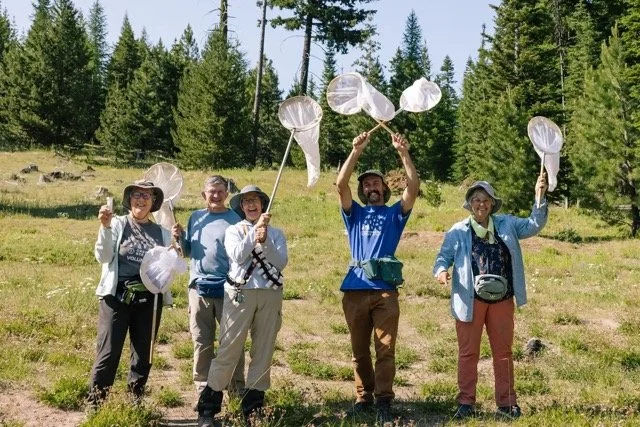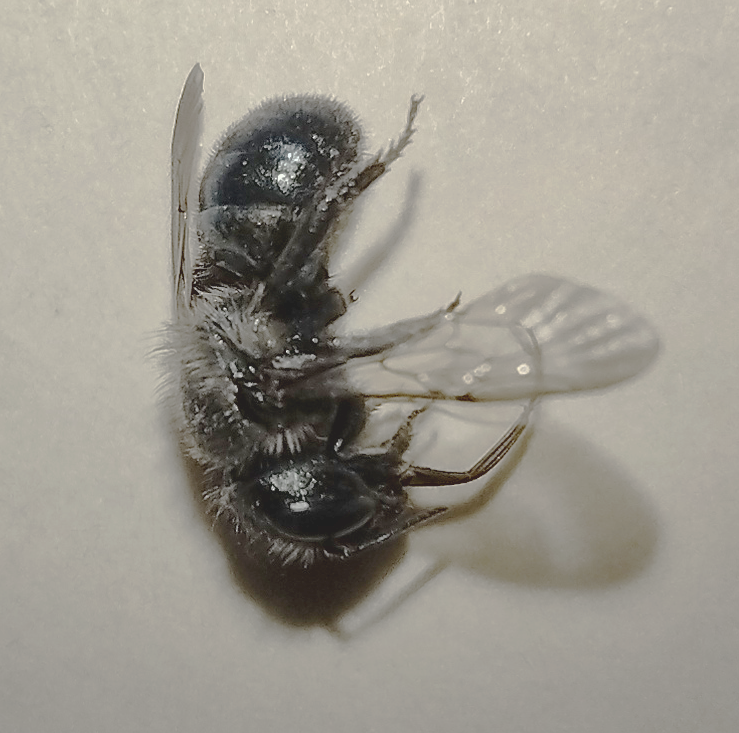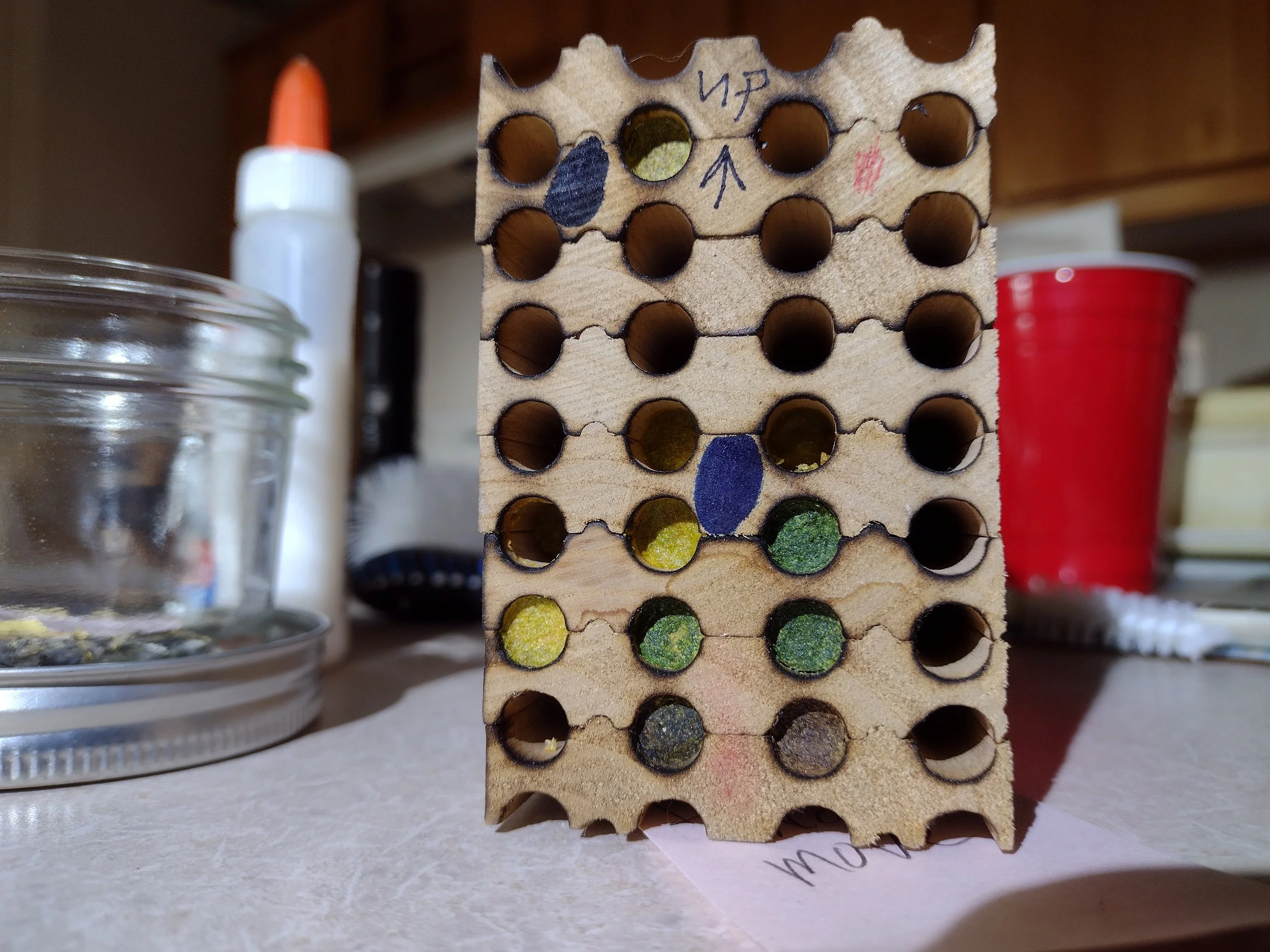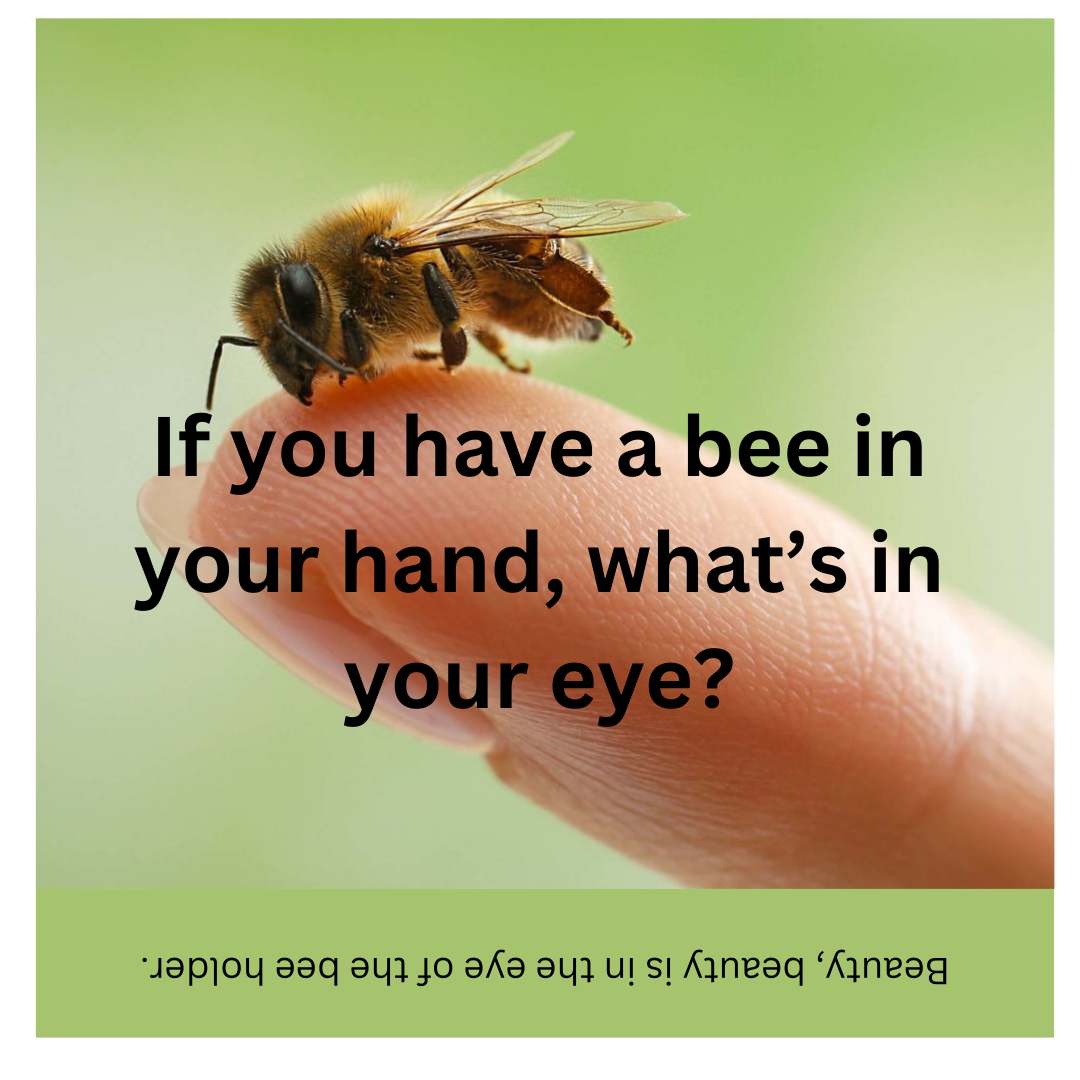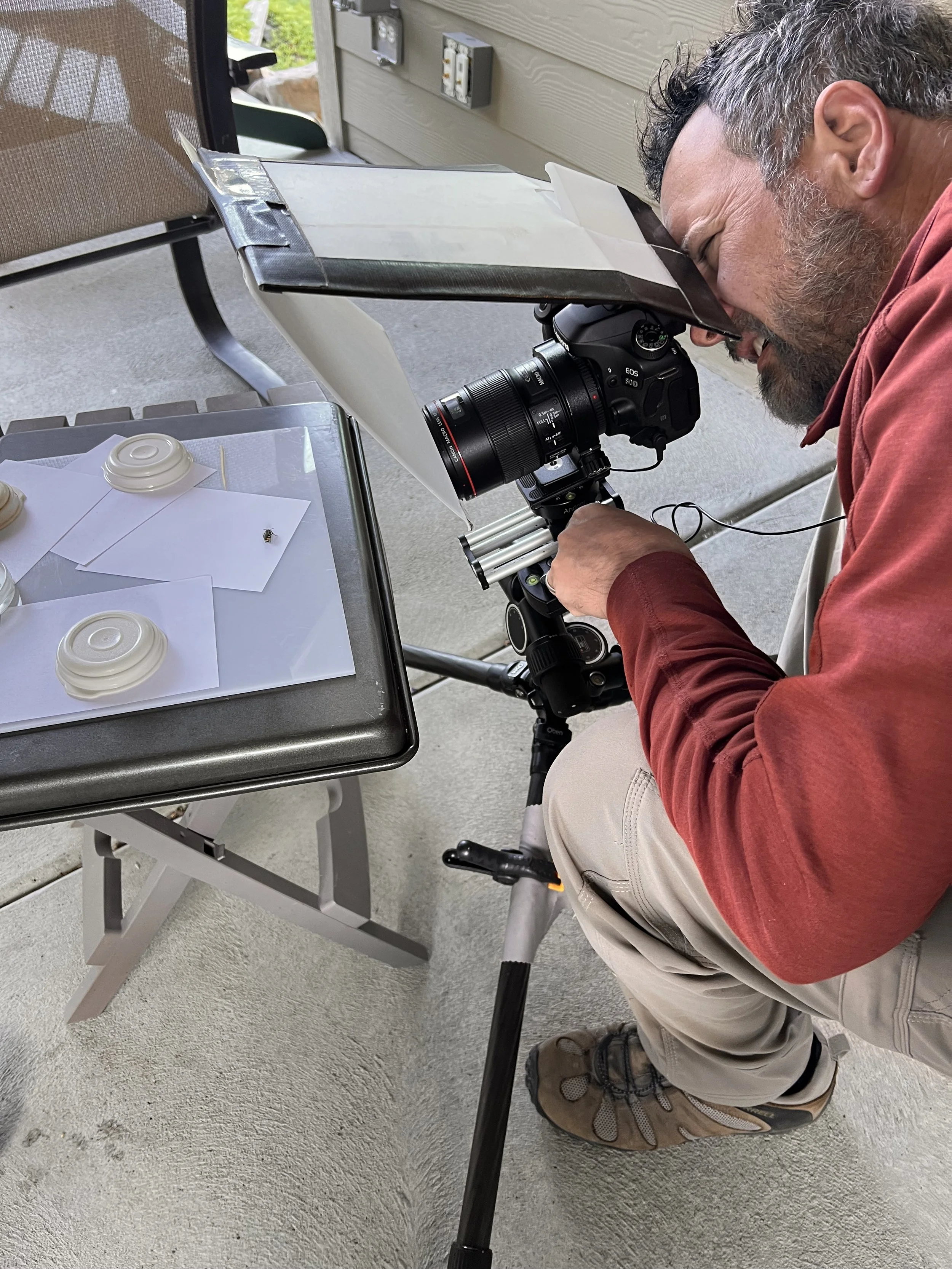Cover Photo by Kim Olson
There’s Melissodes everywhere, which means…
It’s fall! Are you celebrating another summer where you’ve expanded your personal bee understanding? And are you curious if your finds have also expanded the Atlas’ records for new bee locations? Quite likely! Lori Humphrey caught a Xenoglossodes and Susan Albright caught a Biastes, both new record locations in the state. And both bees so exotic I skip over them in the keys. This is just the tip of the iceberg for what our adventurous OBA team did this year. I can’t wait to hear the big story about new finds and milestones from Lincoln Best at our next March conference!
Thanks to everyone who submitted something to share in the Roundup - there’s a lot this month! Please enjoy all their stories and photos. And maybe keep this newsletter handy for all the links to various Bee ID resources that could be helpful for IDing the exotic bees in your boxes!
In this issue
Field Notes: Collection on National Wildlife Refuges - Carol Yamada
Hells Canyon collection trip - RB Buschman
A search for Bombus Morrison - Lisa Robinson
Trip to Mt Hood - Mike Bogar
Miscellany: Bee School Class photos
Leaf Cutter bees take up residence - Toni Stephens
Close up of Bees - Dan Packman
Bee Riddle - Scott Sublette
Joe Dlugo’s Washington Native Bee Poster - Carol Yamada & Lisa Robinson
Team Notes: Dates for Microscope Days in Central Oregon
Outreach at the State Fair - Steve Gomes
Resources for Bee ID reprinted from 2023. by popular request
Reminder: Sept 20-22, final group collecting event. Join Andony Melathopoulos and Ellen Silva at Cottonwood Canyon on the John Day River south of The Dalles. Free camping at a group campsite under incredible starry skies, netting bitsy fairy bees off rabbitbrush and access to microscopes to pin and examine your bees. Family members are welcome. Sign up on Canvas for additional details.
Field Notes
Increasing Bee Data on national wildlife refuges.
Pennyroyal (Mentha pulegium) photo by Kim Olson
Oregon and Washington members have been collecting on several refuges, getting the lay of the land and making some baseline observations as a prelude to being able to capture data in earlier seasons next year. There’s lots of interest among each site’s biologists about what we’re doing and what we’re catching. In August we collected on the same weekend at Tualatin River NWR in Tualatin, and Ankeny NWR near Salem. Pennyroyal was a major source of pollen after the gummed and tarweed that both sites are filled with this time of year.
If you want to collect for this National Wildlife project, be sure to email August Jackson and get on the mailing list for next year for the first full season one NWR collecting.
A Succssful Bee Quest. - Lisa Robinson
Bombus morrisoni photo by Lisa Robinson
I think I have been on a quest for Bombus morrisoni for 7 years now.
Kate Crowell Walker found them in yellow flag iris in the ditch at the west end of Central Washington University, in 2021, and David Jennings went to get photos for washingtonbumblebees.org. I did not find any when I went to the same location, but on a camping trip to Cobblerock Campground, near Prineville, Oregon, I thought I glimpsed one so we drove back down again the next week to find just this one:
https://www.inaturalist.org/observations/89605619
The list of all the places I did not see any in southern Chelan county or northern Kittitas county is extensive. The PNW Bumble Bee Atlas focused on Ellensburg to look for them this year. (I don't know who claimed that piece of the grid, it's not me). On the 5th of August I went to Ellensburg and I thought I might have seen one, but did not get a photo to prove it, so I drove back last Sunday, August 11. I walked up one side of the ditch and back down the other, where I thought I might have seen a small worker. Encouraged in spite of the hot sun, I continued my walk focused on the flowers nearby until I finally spotted a nice big queen in the Securigera varia, Purple Crownvetch. She appeared to be nectaring, but interestingly, she collected pollen somewhere because her corbiculae were chock full of pale pollen. She was very cooperative except for the part where she was big enough the flowers bowed under her weight.
The ditch runs by the science building on the west edge of campus and has many flowers including Solidago, yellow Lotus, Cirsium (introduced species), knapweed, bindweed, and white clover. They are mostly introduced plants, but if they keep what is a rare bee for Washington going, I'll take it.
Another person in iNaturalist has found them in the Umptanum, but that is a trip for another day!
Lisa Robinson lives in Yakima, Washington, but has been contributing to the OBA for years and helped create the Washington Bee Atlas.
Hells Canyon is Bee Heaven - RB Buschman
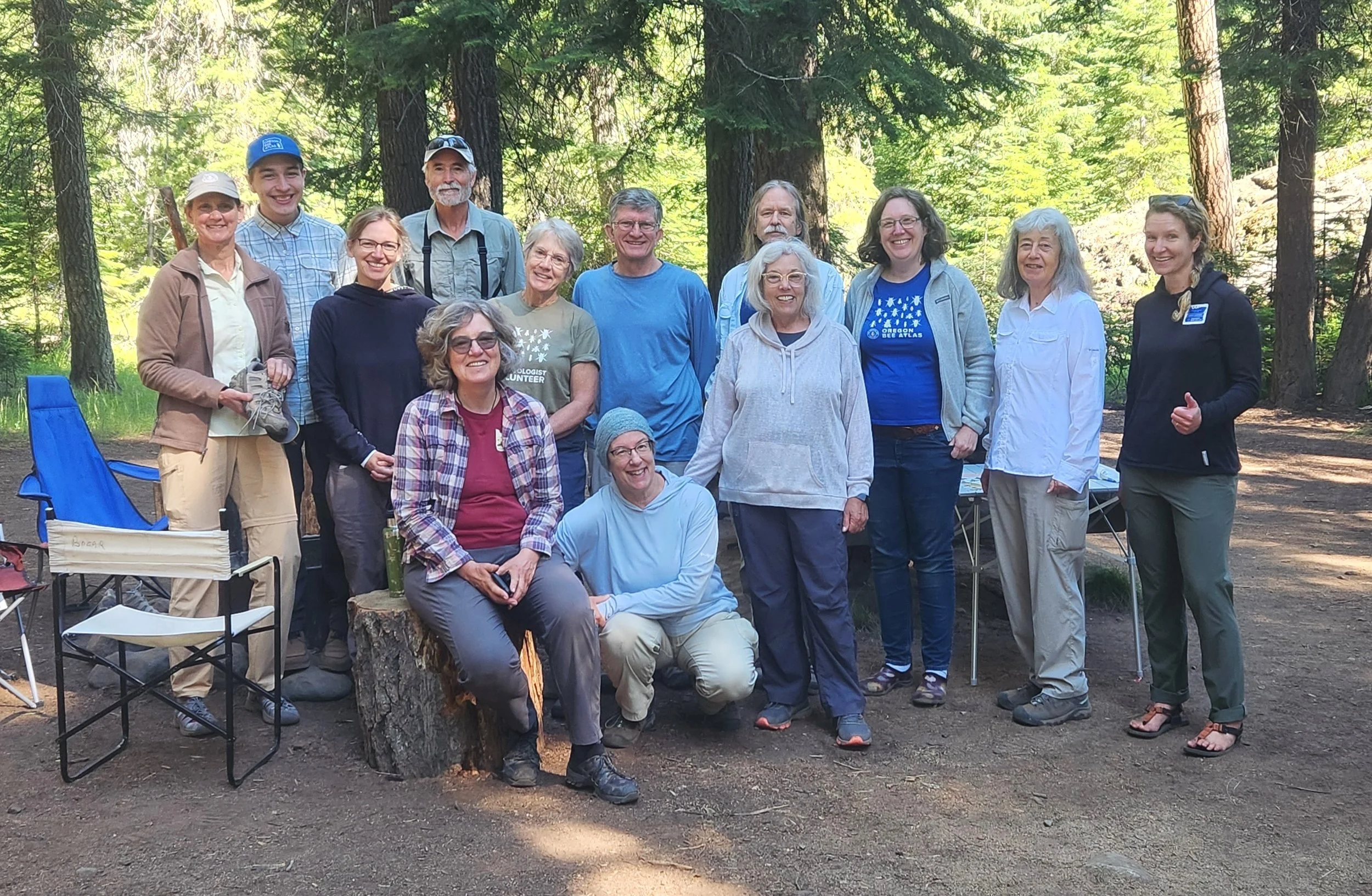

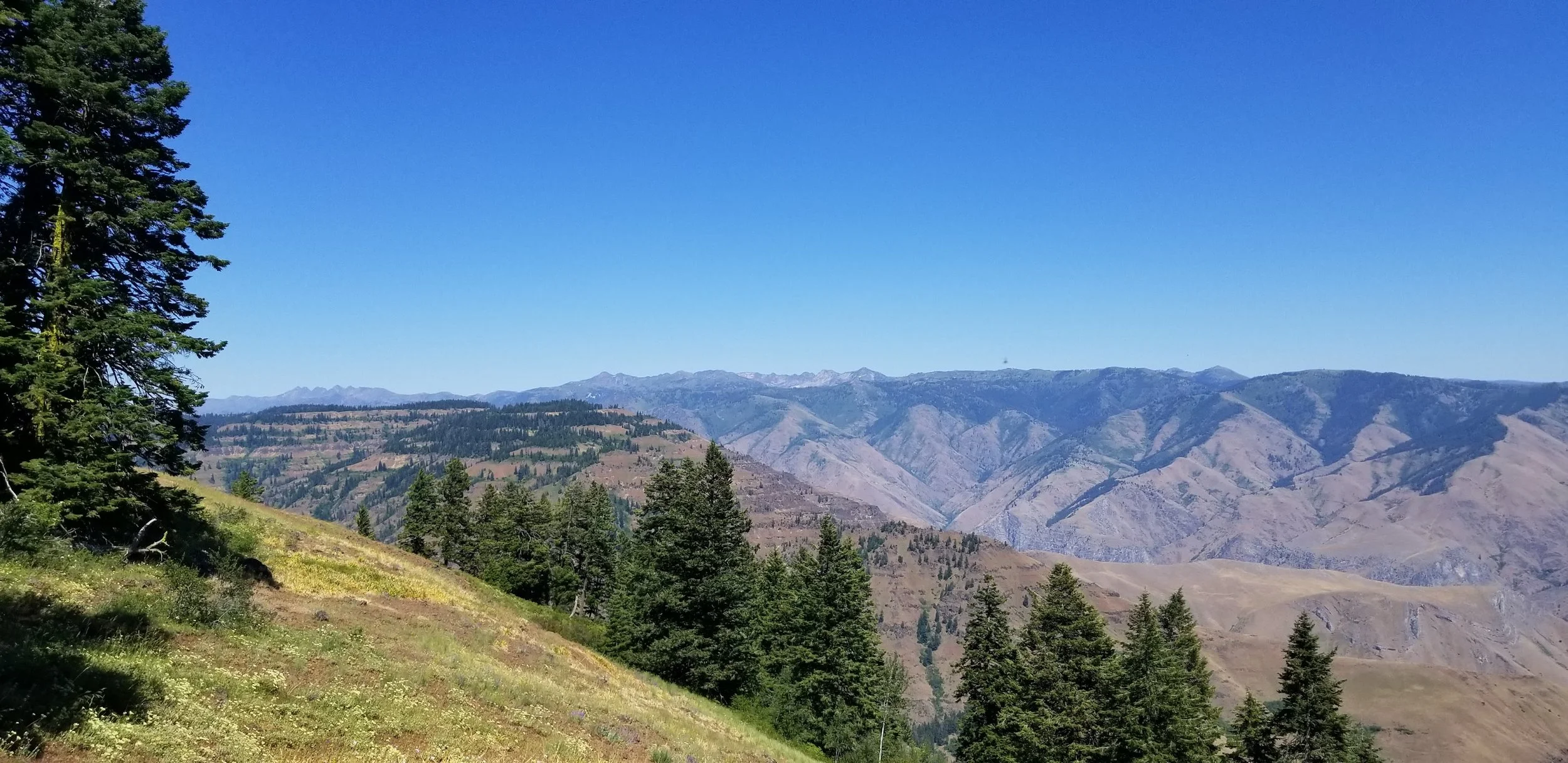
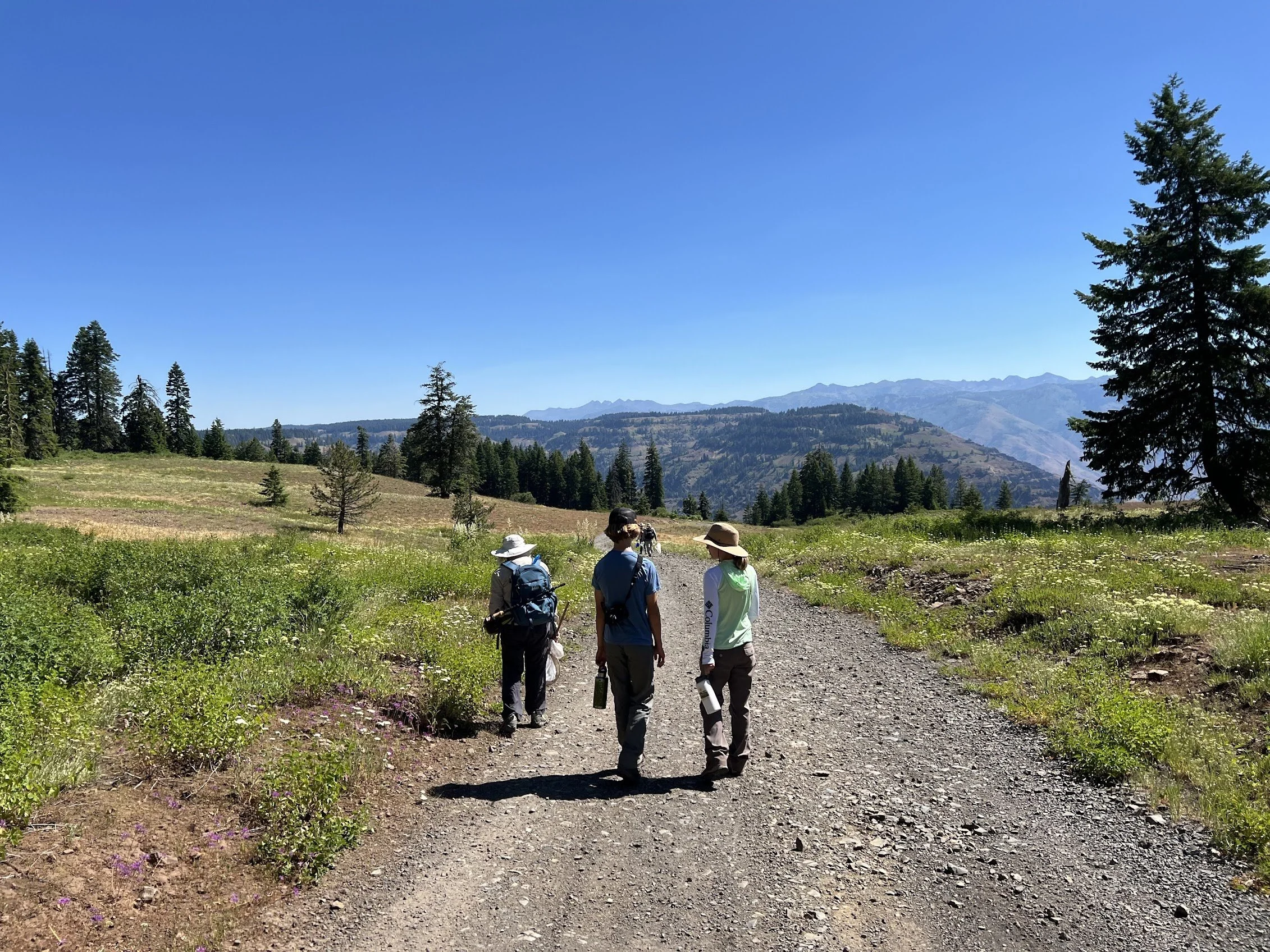
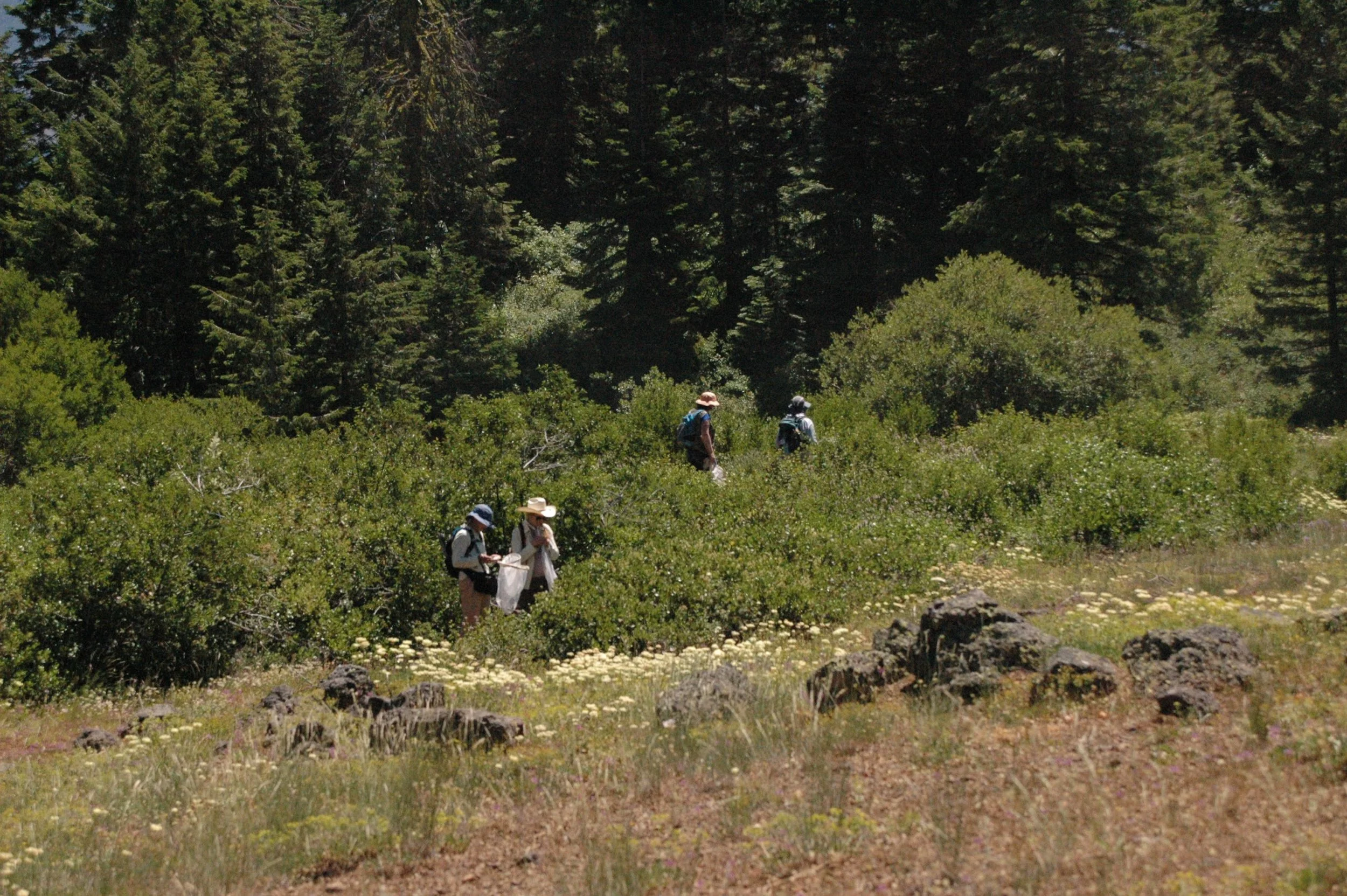
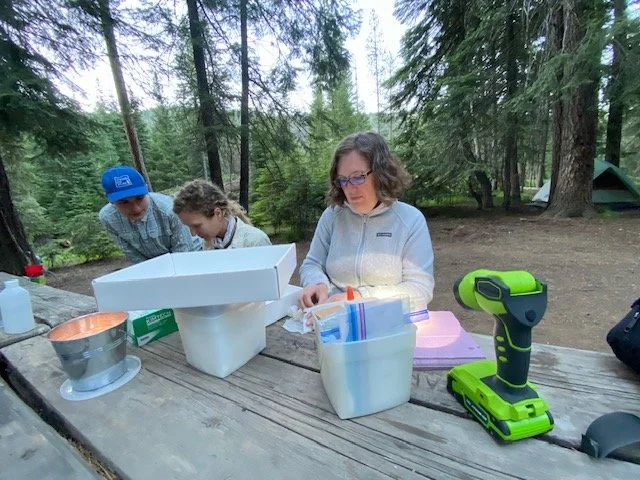

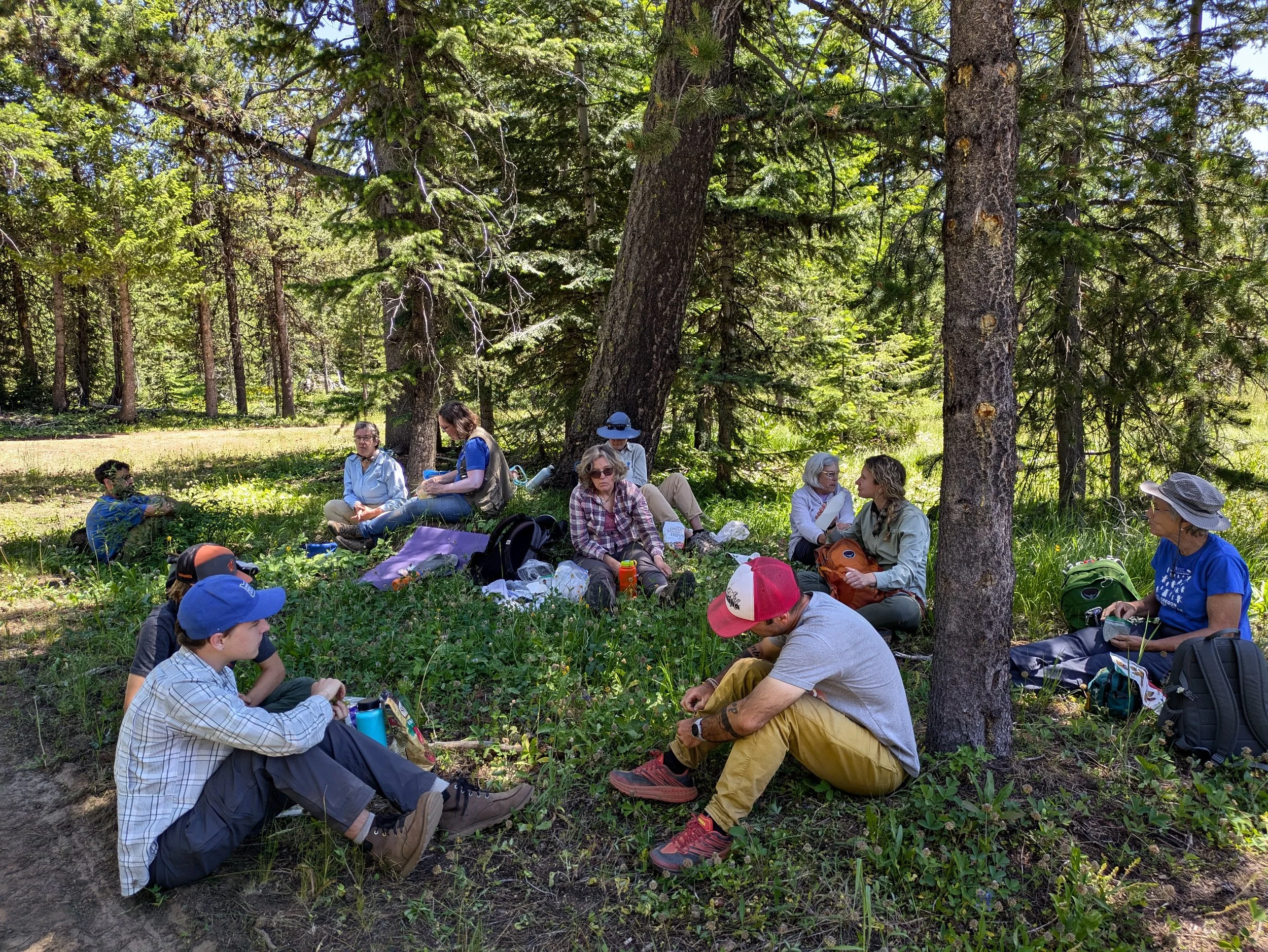
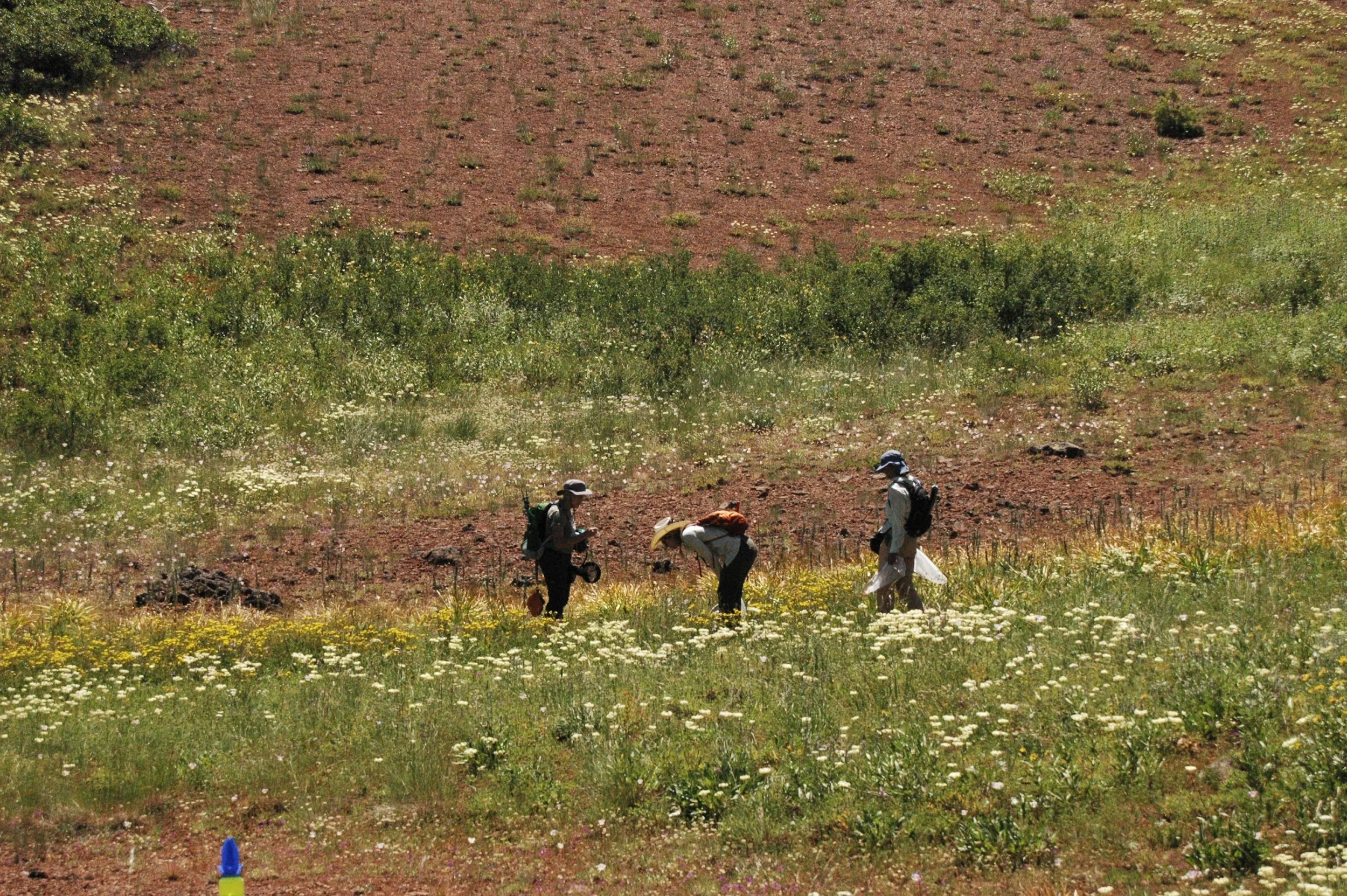

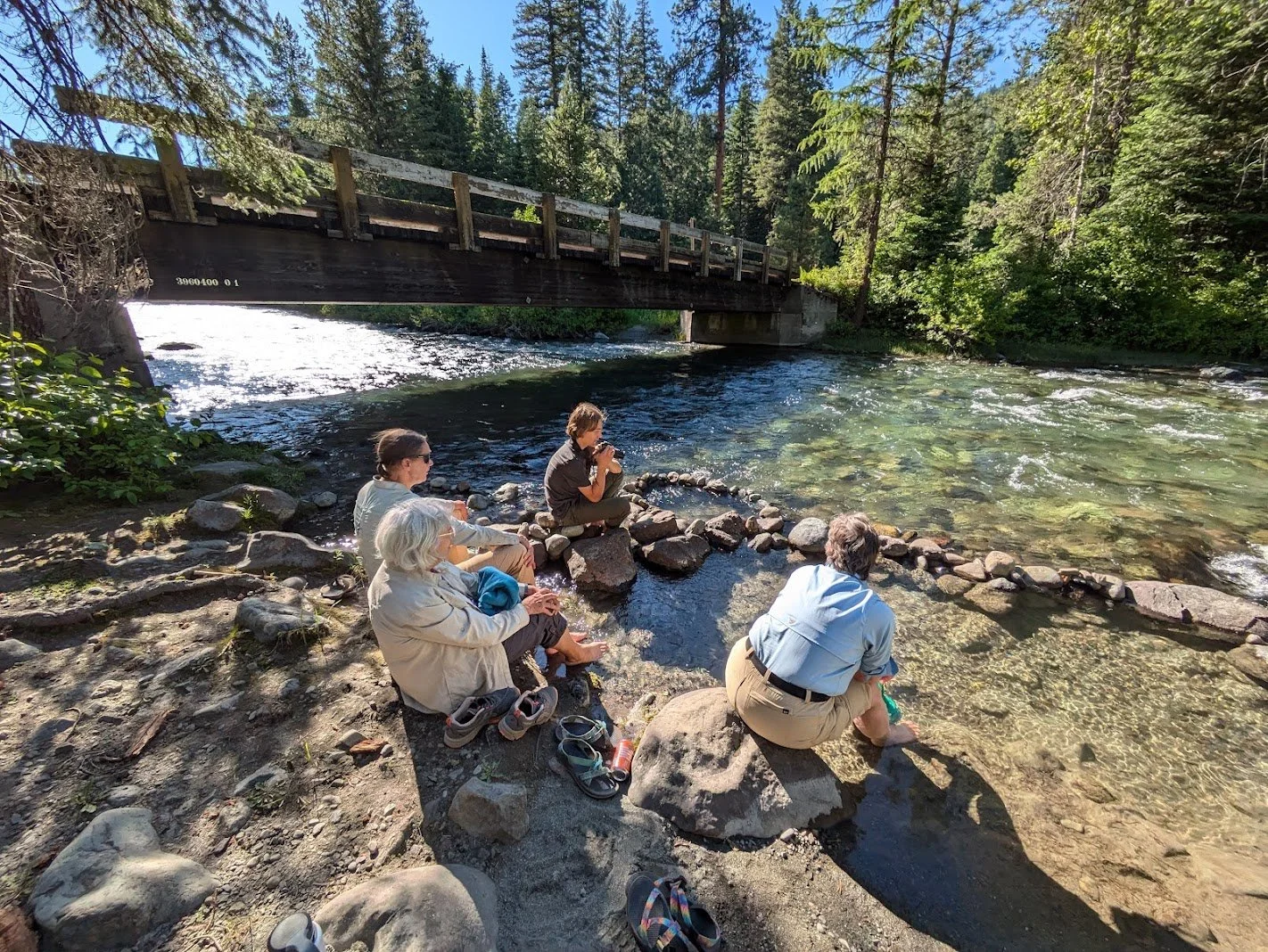
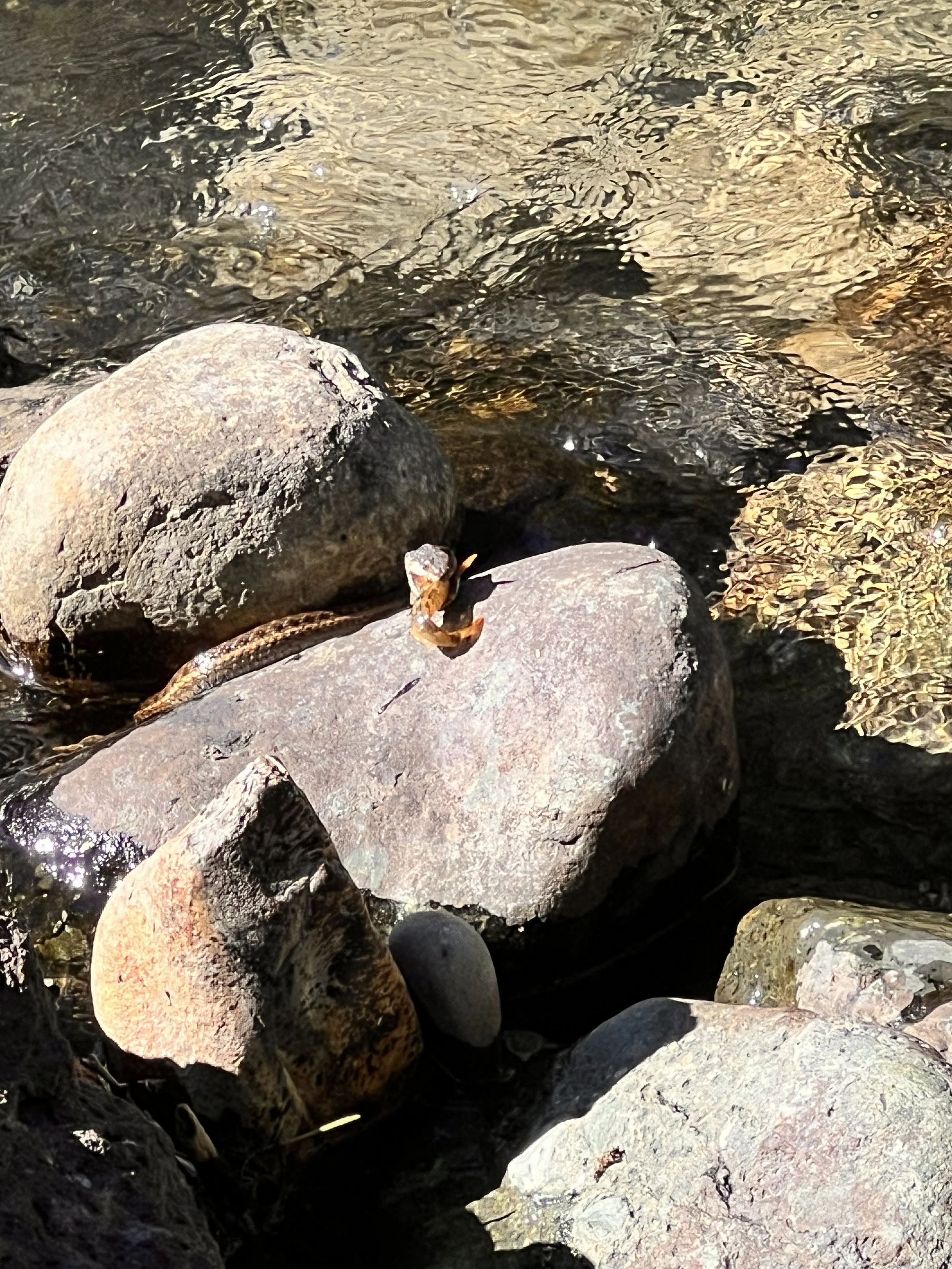
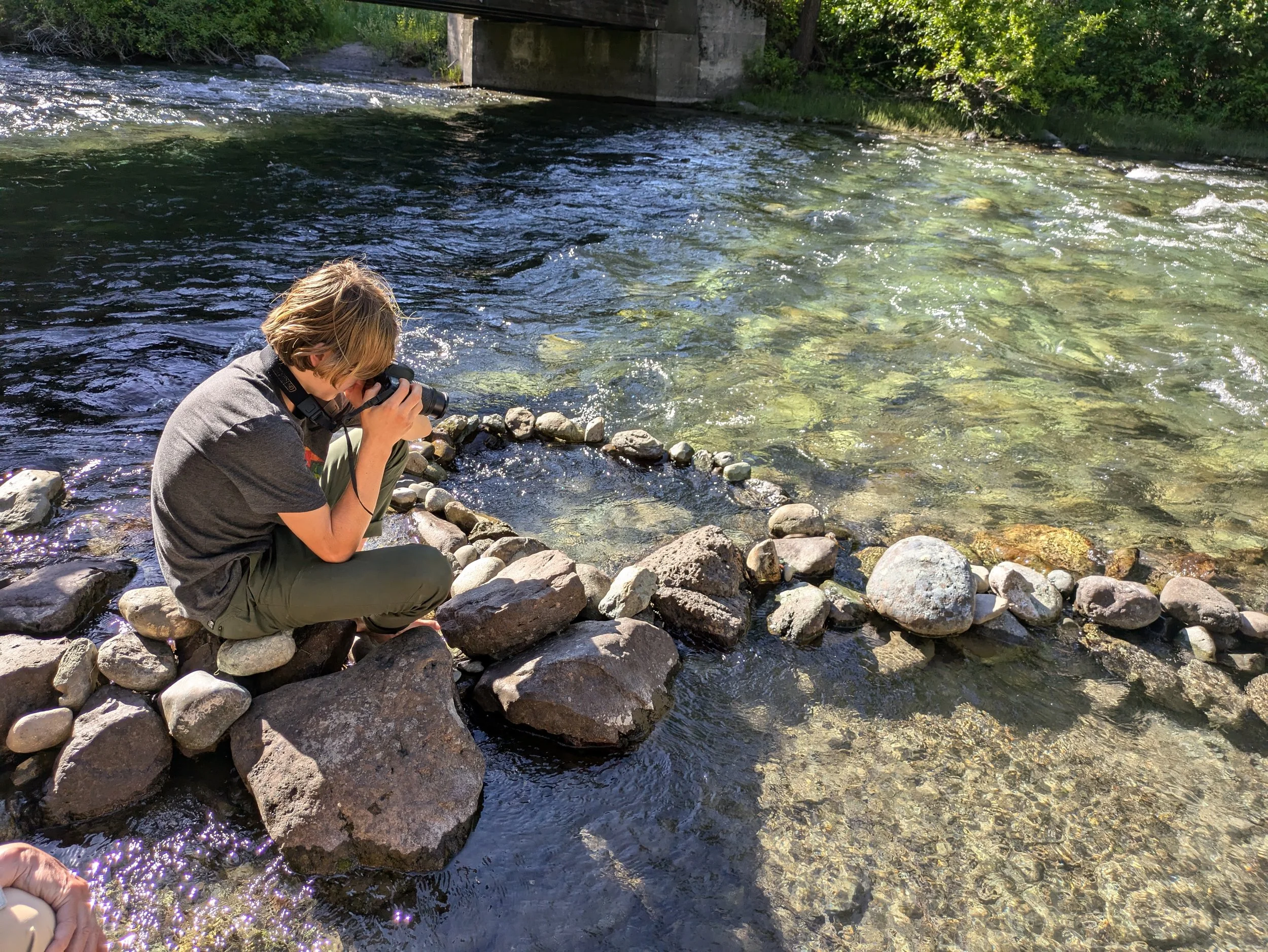
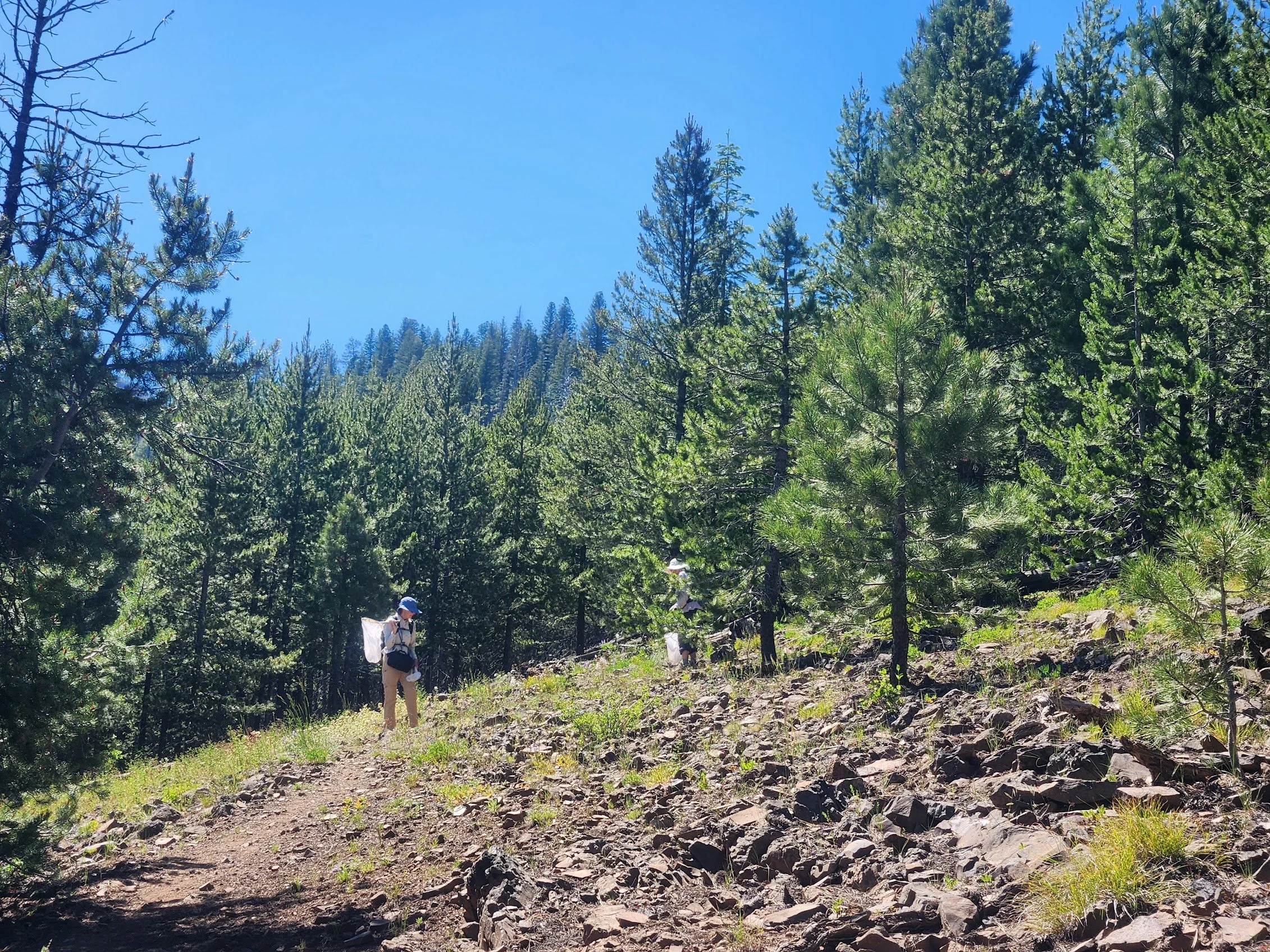
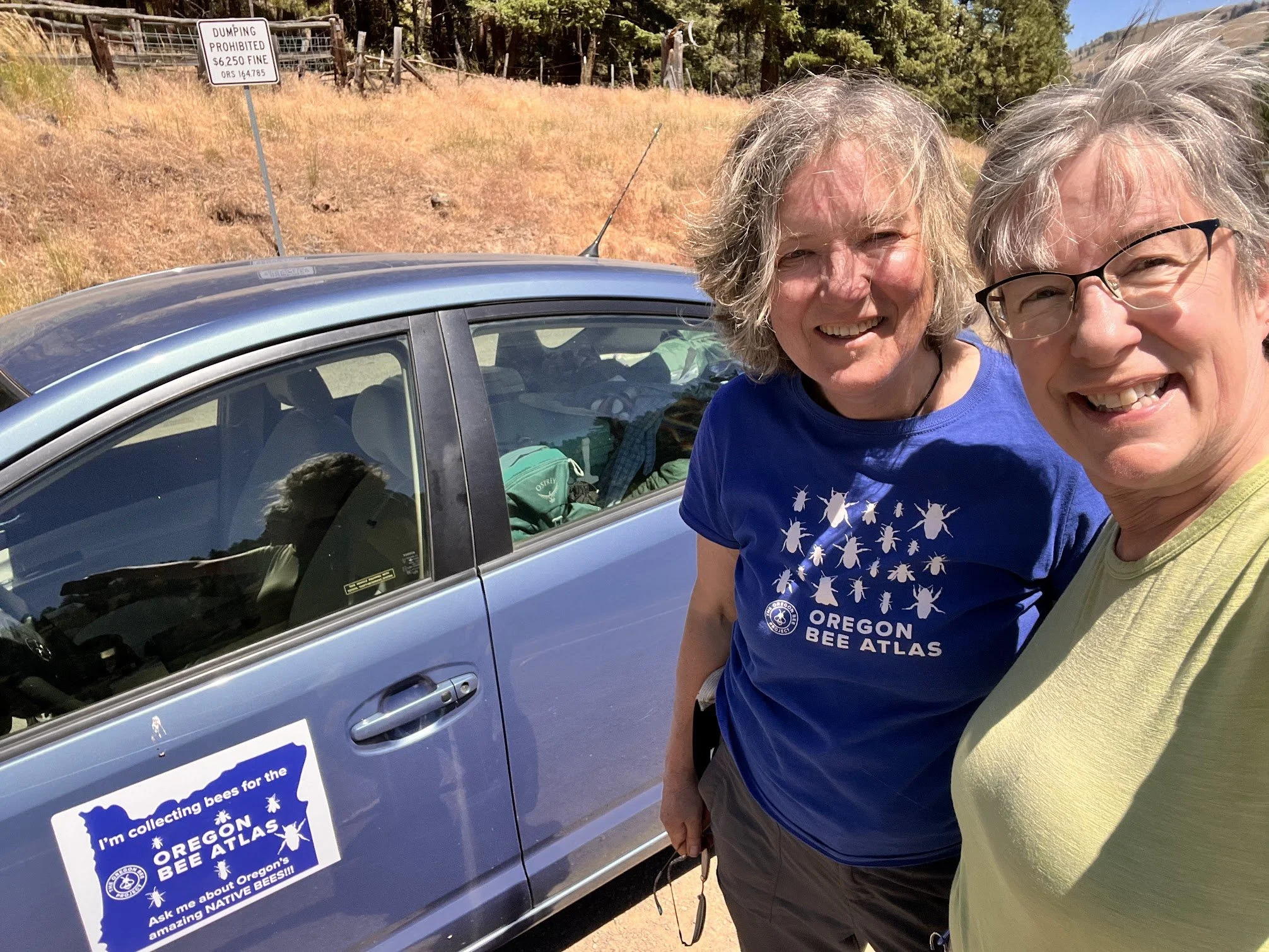
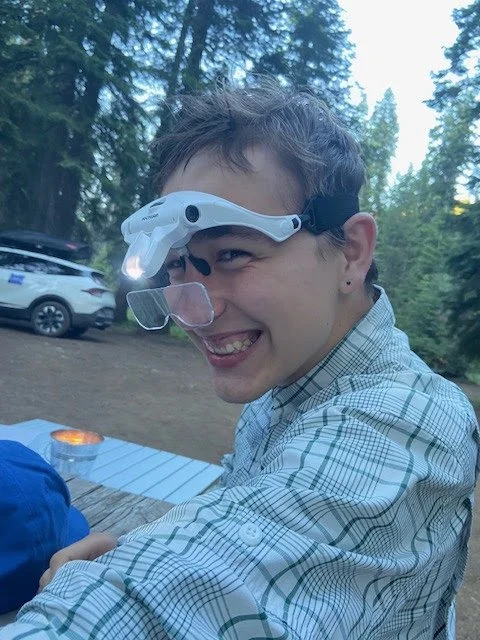
This last July 4th (and 5th and 6th) Sarah Gardiner led her yearly Hells Canyon Melittologist training and bee hunting party. Good bee weather prevailed all three days and the bees were out. Those that arrived early on the 4th collected bees along the trails and meadows near the campground on the upper Imnaha River. It's a beautiful place to camp with forest, river and entertaining wildlife. Bats hang out under the bridge and hunt bugs at dusk. Curious weasels come by to check out who's wading at their beach while small snakes catch fish in the river. There were few mosquitos. There is a large group campsite, which we were able to procure. Otherwise, there is a place for RVs (no hookups) and about a dozen individual campsites.
On Saturday we drove back down the Imnaha and up to the Hells Canyon Overlook. It is about 5,000' elevation, exposed to the east towards the Snake River. At the top, next to parking is a large rocky and scree strewn slope sporting many small flowers in bloom including bee favorites such as asters, clover, geranium, yarrow, penstemon and phacelia. There were more protected areas along the gravel road into the canyon and forest to the west. The late afternoon pinning party revealed Dioxys, Calliopsis, Stelis and Ashmeadiella in addition to the more common genera.
Sunday, we drove north to the Salt Creek Summit (6,000'). Ample parking at the top in the sno-park. From there we found meadows along the gravel road to the east and pine forest and scree slopes along trails to the west. Flowers and bee findings were similar to the overlook. Bees will find every Phacelia in this type of terrain.
Carole, Mike, Ellen, Ryan and Wendy celebrate a great day on the mountain.
Bee Adventure on Mt Hood - Mike Bogar
Mt Hood East Side (Surveyor Ridge)
On July 11, Bee Atlas members Mike Bogar, Wendy Thornton, Carole Miles, Ellen Silva, and Ryan Bear spent the day collecting east of Mt Hood, in the Mt Hood National Forest. We were joined by photographer and wildflower enthusiast Theresa Bear. Photos with this article are from Theresa.
Phots for this story by Theresa Bear
We collected bees at several spots along Surveyor Ridge Road (Forest Road 17), starting at roughly 2500 ft elevation and proceeding uphill to the end of FR17 at 3500 ft. Peak wildflower time along FR17 varies year-to-year, but is typically early-mid July. Our timing was very good, especially for flowers at the upper end of the road.
We started with small patches of flowers along the roadside, including mock orange & ocean spray. Then a long stretch with goldenrod, snowberry, and woolly sunflower and quite a few bees. For wildflowers, the highlight was a meadow behind the remains of an old corral, between FR17 & FR 1710. We found acres of woolly sunflower, penstemon, larkspur, cat’s ear, and more, but we didn’t net a lot of bees. They were too spread out over the acres of flowers!
Our last stop was near the top of Surveyor Ridge Road, at an open area that at first glance isn’t real impressive. But it was covered with small flowers … Horkelia fusca in bloom. We netted Calliopsis on the Horkelia and around nest holes in bare patches of ground. Calliopsis would generally be considered our most unusual genus of the day, but our timing was good and they were abundant at that time & place. In the next two weeks, a few Atlas members visited this site and collected Oreopasites, a nest parasite of Calliopsis. Again, an unusual genus, but not particularly unusual at that time & place.
Team news
Central Oregon Team: We have set our microscope days for October 10, no expert and October 22 with expert. November 12 is a make up day with expert if needed (check with us to see if we hold it). Save the Date for these valuable events! Check the calendar for times and locations.
Portland Team: There will be several sessions this fall and winter, the dates with our experts are being pinned down. Check the calendar before the end of the month.
OBA ANNOUNCEMENTS
Check the weekly emails from Jen Larsen to stay up to date on OBA announcements.
Lab Drop-Ins Replace Weekend Scope Days: Don’t forget that you can come to the lab to work on ID’ing your collection. We can take up to two people at a time in the Corvallis pollinator lab and you will be able to work directly with our collection. This will be of particular benefit to anyone setting off on the journey to the Journey level. To set up an appointment to spend the day in Corvallis, contact our taxonomist, Lincoln Best via email: lincoln.best@oregonstate.edu
Catch a Buzz
Catch a Buzz is the FIRST Tuesday of the month at 7pm. It can be harder to remember to join in when it’s light outside and bees are buzzing around distracting us. Consider setting a reminder to go to https://oregonstate.zoom.us/j/97230252365?pwd=TURyTXNMZ1M5SHl2TFQvajBxemtRdz09 | Password: bees
kudos and thanks are always in season
This summer there have been no nominations.
Nominate your personal hero for going above and beyond and after approval by the Advisory Committee, a handwritten note will be sent thanking your special person. All it takes to get the process started is to fill out the nomination form found by clicking HERE.
Calendar
There are plenty of collecting and field training events remaining in the calendar. Sign up for one today!
MISCELLANY Not to be missed
bee school classes of 2024
Intermediate Bee School Graduates of 2024. Congratulations! It's mind-bending to spend a week in the basement at OSU looking through scopes, yet this is our most popular class and fills up quickly.
Advance Bee Class 2024 Graduation Group.
Curiosity Leads to Better Bee Housing - Toni Stephens
An Osmia that Toni found near the nest.
Every year for the past at least 4 years I have noticed some species of what I believe to be an Osmia nesting under the window in my house. This year I thought I would place a nesting block near the window to see if they would use it. They did! Here is a photo of the beautiful color plugs they created using, I suspect, masticated leaf tissue.
For those of you who are curious what the bee looks like I am including some cell phone photos. I have not looked at this bee yet so I am only giving a guess as to what it might be.
This is a regular sized mason bee house, but put out after the mason bee season and filled with a variety of floral materials for leaf-cutting bees.
Beautiful Bee Details

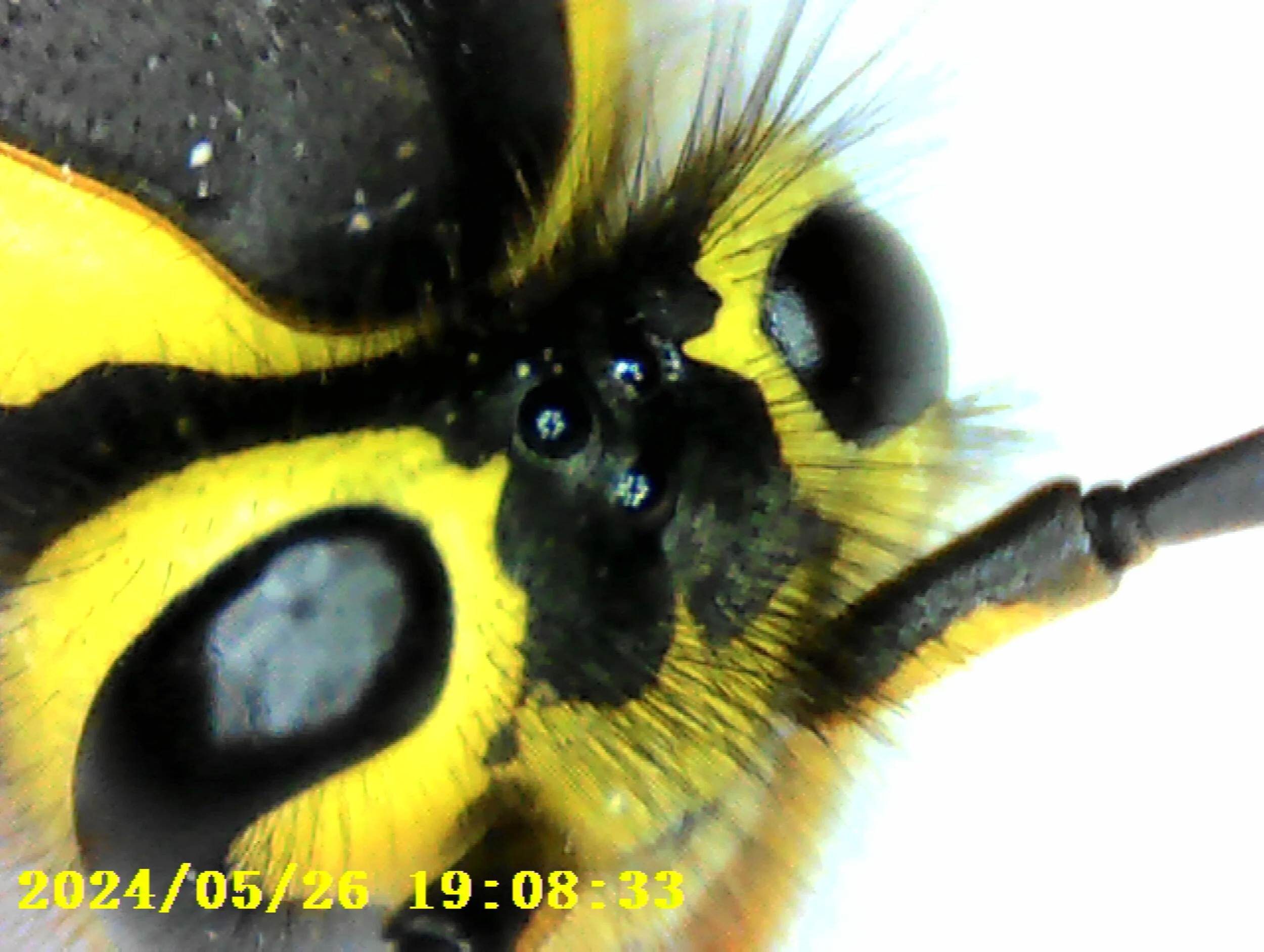
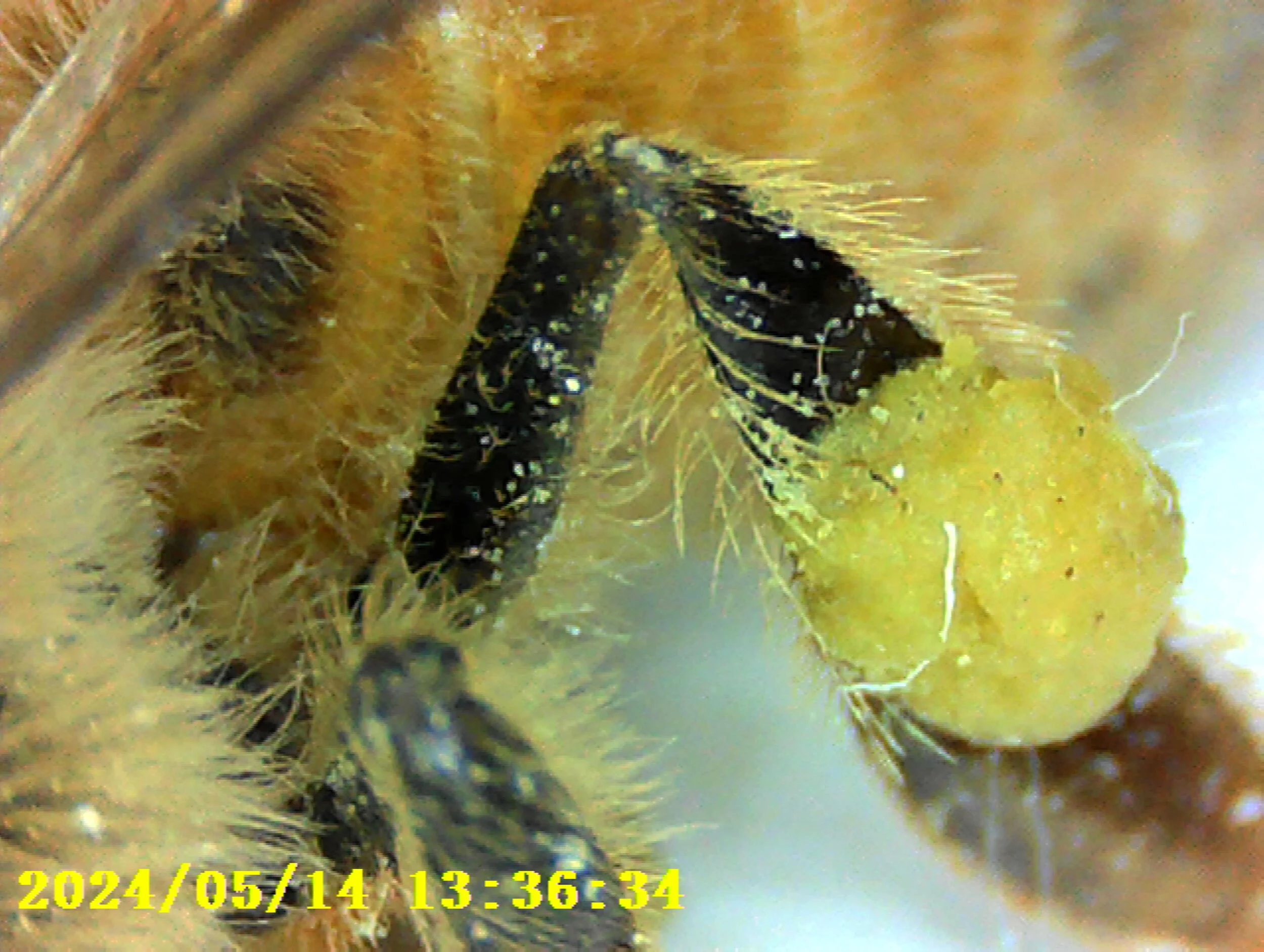
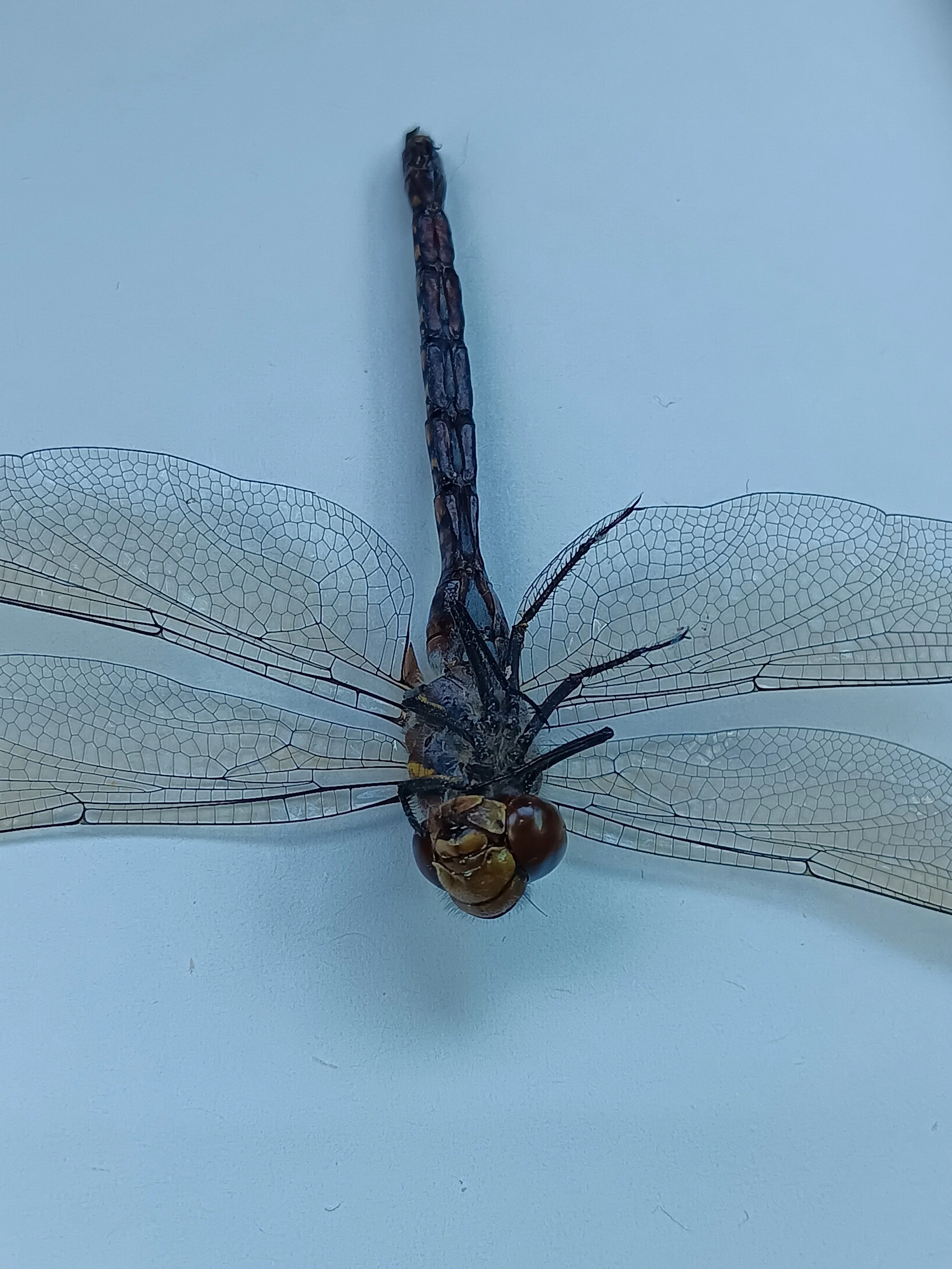
Can you ever get enough photos that show how beautiful bees are? Dan Packman from Bend sent in these close-up photos of a Bombus melanopygus, a wasp, a honey bee loaded up with pollen and a dragonfly.
Thanks Scott Sublette!
Washington Native Bee Society Poster
Poster created by Washington OBA member Joe Dlongo
Joe Dlongo spent years coming up with the photos for this poster. He shoots all of his bees live, since they are more beautiful and so many bee photos people see are of dead bees. , Most of these bees were captured and released in his Puget Sound garden. As the project expands he’s adding bees from around the state. It’s amazing he can get these shots. Here’s an excerpt from a post he wrote about it a few years ago:
Joe Dlongo photographing a sleepy bee.
“All of my bee images on flowers. are shot in the field in the heat of the day with bees in motion, however for my focus stacked portraits on white backgrounds it’s a little different. I’ve had some inquiries as to how it is sone so here’s the story. First off it certainly is hard to get a bee to sit still long enough to focus stack, but that is not the case in the brisk air of the early morning. I keep the bees overnight in a jar on the porch then come morning I place them on a white piece of paper to pose them. All the cooling is done simply with air temperature. I never use a refrigerator as that puts unsightly condensation bubbles in their eyes, an moreover it seems to harm some species. So after I get a round of shots where the antennae sit still (by hard the hardest part of all), I transfer the images to my iPad and stack in Affinity Photo. Then I transfer to Lightroom & Photoshop iPad for fine edits. Everything is done in the quiet golden hours, sipping tea while sitting on on my frigid front porch in a winter coat and listening to bird song. Once the daytime temps are reasonable, the bee is released back into the flowers where it was caught.
(Canon EOS 80D 100mm L Macro Rayon DCR-250-270EX II flash at 1/8 f13 1/100 ISO 250 Focus stacked 26 images in Affinity Photo iPad.”
But wait! What if you just shoot with your phone?
Joe: When I shoot on my iPhone I use the built-in cameras and sometimes will add Moment lens attachments. I shoot with the Moment app so I can control the focus, as the standard camera app will get confused when autofocusing so close. I use an iPhone 15 pro and mount the Moment 75mm macro to the built-in 3x lens and this has been pretty good, especially for video.
The poster sales and interviews with Joe can be found at these sites
Wolf Haven, https://wolfhaven.org/
Poster—https://shop.wolfhaven.org/products/artwork-poster-native-bees-17x11
On Crown Bees: Meet Joe Dlugo — A Must Watch for Backyard Beekeepers!
https://youtu.be/Uvi7sK8mNM0?si=ZryW6IKFCKWkZlmr
Thanks to Lisa Robinson for supplying research for this article!
Oregon State Fair - Bee Project Booth
The Oregon State Fair is the largest single outreach event in our state each year. The Oregon State Beekeepers Association display is one of the most popular at the fair, and over the past few years, the Oregon Bee Atlas has joined them to introduce thousands of people to our native pollinators. Having volunteers at the displays in the Farm and Garden Building, helps enrich the experience for the fair attendees. Please consider spending a few hours as an ambassador for the fair. You are provided free admission and parking, and will have wonderful. time! This year’s fair runs until Sept 3. There was no sign up opportunities for OBA members this year, but there will be in 2025.. Steve Gomes
Where can I ID my bees?
〰️
Where can I ID my bees? 〰️
TOOLS & WEBSITES FOR BEE IDENTIFICATION
This is a reprint from last year. The Roundup staff interviewed bee buddies to see what tools they recommend checking out to ID bees. It’s videos, websites and books that hopefully offers something for your learning style. And maybe help with the learning curve as well!
OBA RESOURCES
Favorite - Scope Days! Microscope Days in Corvallis - Look on the calendar for dates starting in September for in-person and online ID days. The greatest deal on the planet! If you can make it down to Corvallis you can work in the lab using high powered microscopes with taxonomists to guide you in the ID process. Double-check before you go if the weather is bad. And this year has a new feature - online microscope events for those who can't commute to campus. Dates and times for these are also on the calendar.. If you can’t attend a microscope day, email Lincoln Best to set up a time at the lab.
Great too - Local Microscope Days Check in with the people in your area to see if something is set up, like Portland has done in the past at PCC Rock Creek Campus, or consider hosting a bee sorting party or ID event yourself. You'll be delighted at how popular those are. Just say - wanna see some cool bees?
Oregon Bee Atlas videos Remember to review the genera guide lecture modules, Plus check the videos in the Past Lectures Section at the bottom of the module page. There are recorded sessions done in 2020 by our instructors sorting our local bees into genera and subgenera.
Our textbooks The key to the Bee Genera of the Willamette Valley is in our apprentice manual, along with very valuable diagrams and terminology guides. This book, and your bee school books, are great allies for getting ID’s to genera level.
Linc’s lists of species keys by Family These 5 PDF’s will simplify the search for keys in the Taxonomic Resources and Literature located in the Canvas Resources.
And a special bonus for OBA members is access to the foremost bee taxonomist in Oregon, Lincoln Best! Post clear photos of your question bee, where & when you found it and on what flower, to our Facebook page or email them directly and Linc will reply as he has time. Especially if you have a super cool bee. But even if it’s just a wasp…if it’s a cool wasp.
USEFUL ONLINE SITES
Discover Life This website will walk you through getting your bee to genus and even species, although they favor species east of the Mississippi. It's a matrix key so you don't have to worry about getting stuck on an incomprehensible couplet. Check out this video on how to use [Discover Life]1
Sam Droege's Videos Each week Sam’s one hour microscope videos (95 sessions so far) focus on something specific, like identifying male andrena to sub species…episodes 1-7. It may cover bees we don’t have, but it’s useful to look thru the microscope with him as he describe the characters he’s talking about and to familiarize yourself with bee anatomy and key characters. http://bio2.elmira.edu/fieldbio/beemovies/index.htm
iNaturalist .org Look up bees where you were netting and see if you can find a match!
BugGuide.net John Asher works with site to ID bee photos. Sometimes it’s got just what you need!
Exotic Bee ID This is primarily for identifying introduced species, but does include natives, too. It’s best for anthidium, osmia, some megachile. Good diagrams and photos - it's also a matrix key.
Megachile of Canada is a nice photo key that can get you to some Megachile subgenera and species. Although it is for Canadian bees, the large clear photos and ID process can teach a lot about what to look for on a bee.
David Cappaert’s guide to Ceratina and Andrena in Oregon. David lives in Corvallis and has built keys to make bee ID easier to for laymen to accomplish.
If you have discovered tools that help you that we haven’t listed here, please let us know where to find them. Always looking for more!
Instructions for Donating to the oba
Would you like to help ensure the future of the OBA with a donation to the endowment fund? Start by clicking HERE and in the “I want to give to…” field, start typing “Jerry & Judith Paul Native Pollinator Endowment” and it should pop right up. Be sure to select this exact destination for your funds to get it in the right place. And thank you in advance!
Or- get a Pollinator Paradise license plate for every car in the family!
